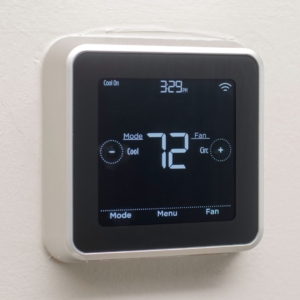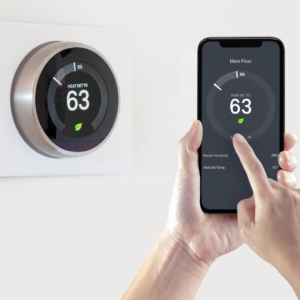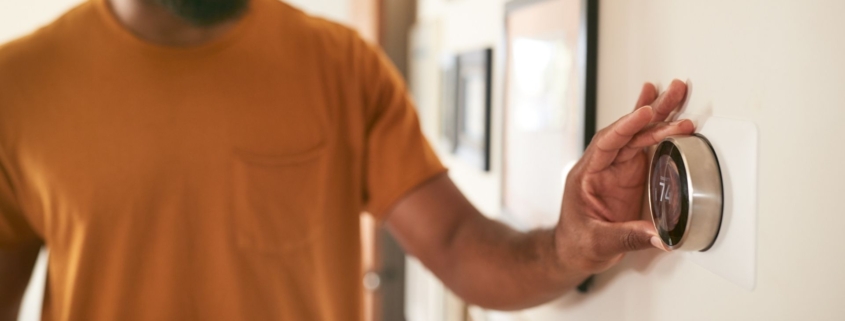Programmable vs. Smart Thermostats: Which Is Better?
Rising electricity costs are outpacing inflation, making energy efficiency more important than ever for homeowners looking to cut bills. One surprising factor? The thermostat controlling your heating and cooling. But with so many options, how do you choose the most cost-effective one?
Get the details on the key differences between programmable and smart thermostats and learn how each can impact your energy savings. Plus, find out why thermostat installation isn’t a DIY task and how professionals help can make a real difference. Stay informed to discover which thermostat could save you money and boost your home’s efficiency.
What Is a Programmable Thermostat?
A programmable thermostat is the traditional, manual thermostat that was once the only option. These thermostats feature buttons to set the temperature higher or lower and sometimes allow you to set a pre-planned schedule. For example, if you’re going into the office, you can create a schedule that allows the thermostat to automatically adjust to a more comfortable temperature once you’re back home. Programming your thermostat in this way can help you save money on energy costs.
What Is a Smart Thermostat?
Smart thermostats were introduced in 2007 as an upgrade to traditional programmable thermostats. A smart thermostat learns your temperature needs over time. They are also Wi-Fi enabled, allowing you to control the temperature settings remotely from your smartphone. For instance, let’s say you left for vacation and forgot to turn down your AC. With a smart thermostat, it’s easy to adjust the AC remotely using Wi-Fi while away.
Energy Savings Comparison: Which Is More Efficient?
Smart thermostats automatically reduce your heating and cooling based on your usage, saving you money in the long term. According to ENERGY STAR, smart thermostats can save you approximately 8% on heating and cooling bills per year. This is because smart thermostats can be remotely controlled and programmed to automatically adjust temperature settings.
Programmable thermostats can be just as energy-efficient, but they depend on consistent use and manual scheduling to deliver savings. They cannot be controlled remotely, which means you must be diligent about setting the temperature before leaving the house. They may not have all the bells and whistles of a smart thermostat, but programmable thermostats can still be used to lower energy consumption.
Installation Considerations: DIY or Pro?
While it might be tempting to DIY or hire someone off Craigslist, thermostat installation is best left to a licensed electrician. A professional ensures it’s done safely and correctly.
By installing a thermostat yourself, you run the risk of:
- Electrical hazards
- Incorrect wiring or damage to HVAC systems
- Voiding warranties or missing rebate requirements
By hiring a licensed professional to install a thermostat, you can:
- Ensure code compliance and safe setup
- Verify compatibility with existing HVAC
- Maximize efficiency and savings through proper calibration
Final Verdict: Which Should You Choose? 
The choice between a programmable vs. smart thermostat is truly up to you. The best choice is subjective and depends on your needs. They both can help control your energy usage and lower your energy bill.
The more economical choice upfront is a programmable thermostat. However, if you’re drawn to a customized experience, a smart thermostat might be your best bet. Either way, it’s important to call a professional for installation to ensure a safe setup and long-term efficiency.
Need Electrical Help at Home? Connect with a Local Electrician
If you’re seeking a licensed and bonded electrician to install thermostats in your home, look no further than Powering Pacific Northwest. Our residential electricians are safety-minded pros with experience in home electrical needs, including thermostat installations. They will ensure your thermostat is compatible with your HVAC system and install it safely and effectively.
Find a local electrician today.




